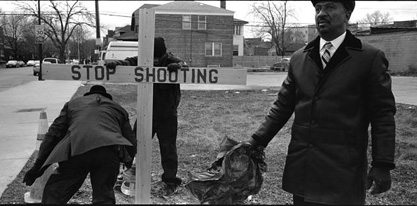Tag: PBS
CPB recognizes Moore, an author and youth advocate, as a pubcasting “Thought Leader”
Wes Moore, the host of Beyond Belief on OWN: Oprah Winfrey Network and author of the bestseller The Other Wes Moore, won CPB’s Thought Leader Award, ...Food shows produced for PBS, WHYY and WBEZ cited for excellence
Public broadcasters won four James Beard Foundation awards for outstanding food journalism.PBS buys more of what works in primetime
As public television’s chief program exec and top producers unveiled highlights of the fall 2013 primetime schedule at the PBS Annual Meeting ...PubTV stations move to pitch sustainer gifts during pledge
“Sustainers,” as this increasingly commonplace breed of member is called, renew at higher rates than those responding to traditional pledge pitches.PBS acquires new British drama to anchor Sunday nights
Aiming to build on its successful strategy to boost viewing on Sunday nights, PBS acquired a new hit drama from the BBC, Last ...Kerger describes factionalism within pubTV as system’s greatest threat
MIAMI BEACH, Fla. — PBS President Paula Kerger called for local public TV stations and PBS to move beyond their reputations as ...CPTV’s mobile venture to share revenues with PTV outlets
Connecticut Public Television has joined with a digital media company in rolling out a new mobile platform that will offer digital downloads ...PBS wades into over the top content streaming with new Roku apps
As of May 8, owners of Roku Internet streaming TV set-top boxes gained access to the first-ever curated collection of PBS shows ...Merrill Brockway, Emmy-winning Dance in America producer, dead at 90
Merrill Brockway, a producer and director of several PBS arts programs who was best known for his work on the Great Performances spinoff Dance in America, ...Blazing her own path as a pubTV broadcast engineer
The first television broadcast in China was transmitted in 1958. The first time that Ling Ling Sun watched a television program was ...APT, PBS partner to offer Moyers & Company for viewing on COVE
Moyers & Company has become the first American Public Television-distributed program to be presented on the PBS COVE online video player and PBS mobile ...NEA announces 2013 media arts grants; OVEE and AIR projects among recipients
The National Endowment of the Arts announced $4.68 million in funding to 76 media-arts projects April 23, including new grantees such as ...Ready to Learn builds on digital-learning push with new station grants
The Ready to Learn program backing educational media and outreach for children ages 2 to 8 is making digital learning through community ...PBS FY14 draft budget has $11M content hike, no dues increase, thanks to income influx
PBS’s year-to-date financial results show a net income of $22 million instead of the estimated $100,000 net loss anticipated in its fiscal ...Scarce funding limits public media’s response to gun debate
The mass shootings last year in Colorado, Wisconsin and Connecticut reawakened Americans to recurring tragedies of gun violence and rekindled a national ...









